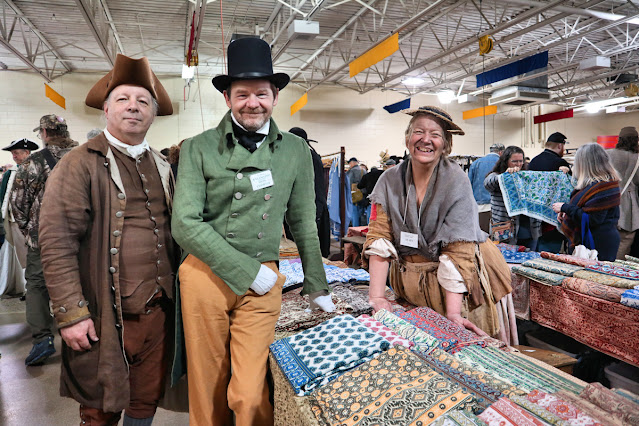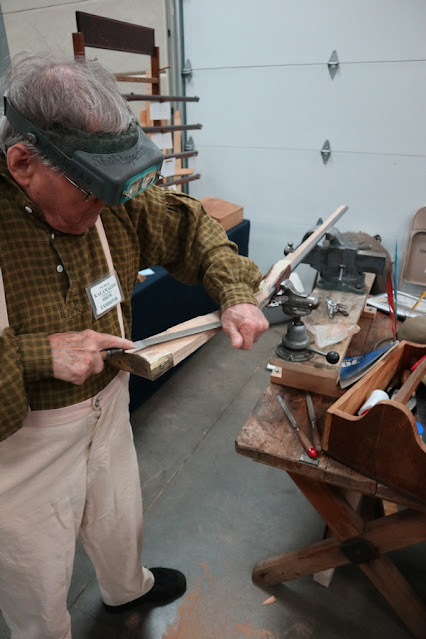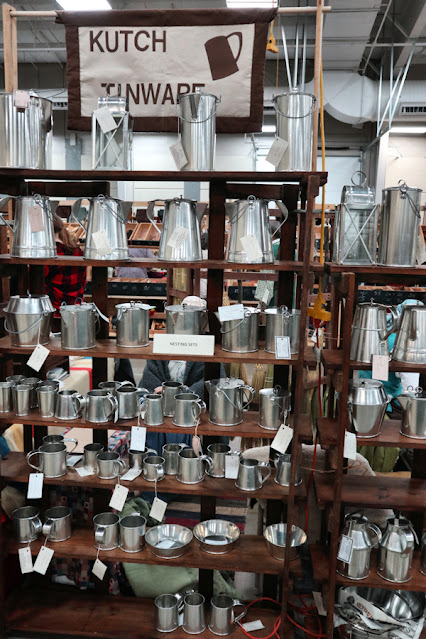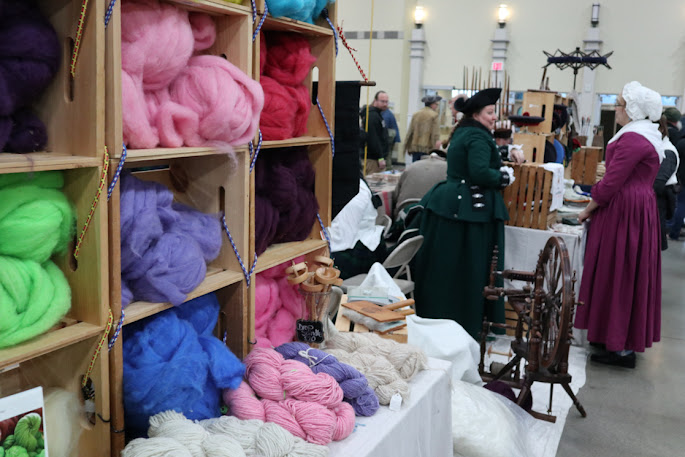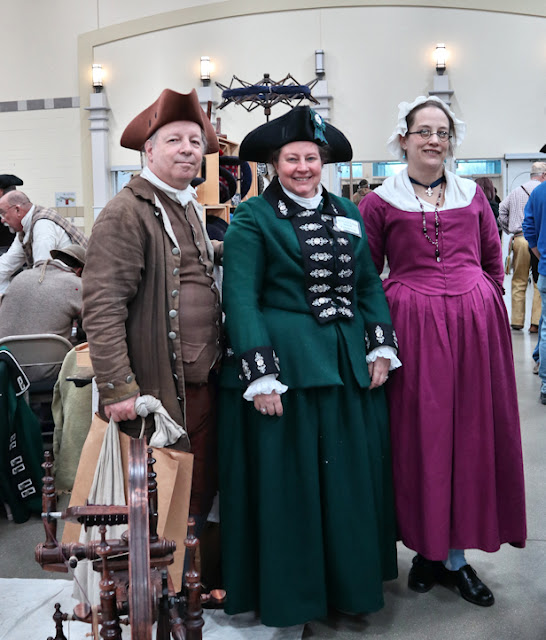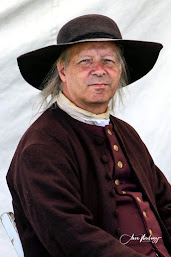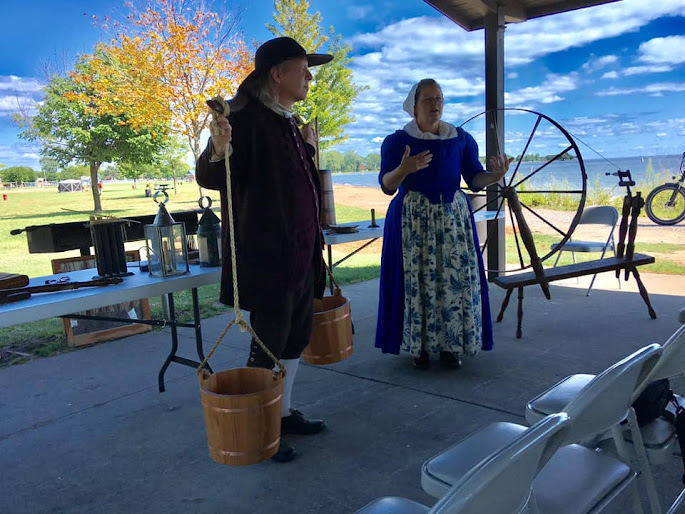After a two-year wait, me and my co-living historians, Larissa and Bob, were finally able to present to members of the local Detroit Chapter of the SAR: the Sons of the American Revolution, which is the largest male lineage organization in the U.S. We were supposed to do this presentation two years ago, but, you know...covid and all... But on Saturday March 12, 2022 we were able to speak to the men (and a few women) whose blood runs deep in our American history!
Our Patriots presentation centers on three people who played a role in the American Revolution: Ben Franklin and any number of famous topics he was involved in, Sybil Ludington, who made a harrowing ride two years after Paul Revere's, and Paul Revere who spoke of his most famous of warning rides.
 |
Benjamin Franklin, Sybil Ludington, and Paul Revere.
Okay, so I don't look like Mr. Revere, and we have no idea what Miss Ludington
looked like.
But the likeness of Ben...wow!
Yeah...and then there's the information we speak on...that's what counts. |
The Detroit Metropolitan Chapter of the Sons of the American Revolution works with other organizations in furthering the understanding of the War for Independence - teaching and celebrating our early American history.
A few years ago I was very proud, humbled, and honored that my family and I had been selected to receive the Flag Certificate of Commendation from the National Society of the Sons of the American Revolution – Detroit Metro Chapter - for my displaying of historic American flags.
 |
In 2019 my family and I were recipients of the wonderful flag commemoration
you see me holding up.
I began collecting historic flags nearly two decades ago and have been purchasing
them ever since. I fly them at my house frequently, which garners great conversations
from passersby, and I especially love to fly them at our historical reenactments,
which also is a great teaching opportunity.
It was such an honor. |
For this March 2022 presentation, the flag I brought along with me was the Taunton Flag, which was first adopted on October 21, 1774 after the Sons of Liberty had forced out American Loyalists from Taunton, Massachusetts. 'Twas the Reverend Caleb Barnum who originally proposed a plan for a symbol of opposition to the Crown and was one of the early purveyors for support for American independence. In commemoration, the Patriots erected a liberty pole, 112 feet high, outside of the Taunton Courthouse and the house of Tory Loyalist lawyer Daniel Leonard. It was on this pole they raised the Red Ensign with the words "Liberty and Union" sewn onto it - the Taunton Flag (which was adopted as the city flag of Taunton by a resolution of the Taunton City Council on October 19, 1974).
 |
| The Taunton Flag - a banner not often seen in modern times. |
I was very pleased to find this made of cotton: "Early American flags were made from wool, cotton, linen or silk, depending on the availability of materials and the intended use," Kansas State University professor emeritus of textile science Barbara Gatewood said.
A combination of these materials also was used sometimes. A wool bunting fabric, which was produced in England, was the material of choice for early American flags, she said. This material was favored over cotton, which faded more quickly and didn't unfurl as well in the wind. However, many early American homemade flags were cotton because it was readily available. Linen was a less favorable material, although it was often used to make the stars or to sew flags because of its strength.
"Flags made from silk were more expensive, and thus were used in flags for military purposes and special occasions," Gatewood said.
I also brought along a replicated "Old North Church Lantern" made and sold by the Concord Antiquarian Society back in 1975 to commemorate America's bicentennial. The society has the one remaining of the two lanterns that shined on that fateful night back in 1775.
 |
The one remaining original Old North Church Lantern that signaled Paul Revere to make his famous ride on April 18, 1775. It is now in the care of the Concord Antiquarian Society. |
At the time, little or no significance was placed on the lanterns used to send the momentous signals, as is often the case. For the preservation of the sole-survivor of the original pair, seen in the picture at left, we have three people to thank. First is Robert Newman, sexton of Christ Church (Old North Church), who was a friend of Paul Revere's and one of two people who climbed the 154 stairs that took them to the ladder to climb even higher into the steeple, the tallest marker in Boston at the time, to set the signal. Because Newman saved the lantern, I believe he may have had a sense of history about him. I have not found what happened to the second lantern.
The second person to thank is Captain Daniel Brown of Concord. He obtained the lantern from Newman in 1782, and it's believed he recognized its historical importance. It remained in Brown's family until 1853, when it passed into the possession of Cummings E. Davis. Davis was a collector of old items - the kind of things most others didn't want to keep, in this case mostly colonial artifacts with local histories. This hobby of his led to Davis, over time, acquiring what is now considered to be the first great collection of early American artifacts, including the Old North Church lantern from the descendants of Daniel Brown.
The Davis collection became so large and attracted so much attention and interest that he began to devote all of his time maintaining and exhibiting it. In 1886, because of age, illness, and expense, Davis willingly gave up ownership of this amazing collection of Colonial America to the newly formed Concord Antiquarian Society, whose purpose was to preserve and exhibit the artifacts, which continues to this day as the Concord Museum.
 |
Here is the original 1975 / 76 advertisement from the Saturday Evening post. It was also in Life, Time, and Newsweek. I wanted the lantern so bad!! |
Let's jump ahead 200 years, to the beginnings of America's Bicentennial celebrations - 1975. The Limited Edition Collector's Society, with the approval and blessings of the Concord Antiquarian Society, arranged for the meticulous production of a limited number of certified, authentic copies of the Paul Revere/Old North Church Lantern. According to the Limited Edition Collector's Society, there are only two aspects of the lantern in which the reproductions are not absolutely faithful to the original:
First, they were not individually hand-made by a craftsman, for this would have raised the price much higher than what was charged in 1975.
Second, metals such as sterling silver and pewter were used instead of the impure sheet iron in which the originals were made. Again, this was due to cost as well as the fact that the old metals would rust over time, as has the original.
These Bicentennial lanterns were meant to be high-quality heirlooms...keepsakes.
And, after searching all over the internet for quite sometime, I was able to find one of these replicas that are now almost antiques themselves!
 |
My replicated Old North Church Lantern from 1975 with a candle burning…  | The plaque that is placed upon the plinth: Considering it is now nearly 50 years old, the lantern is nearly an antique itself! |
|
Back in late 2014 while combing the 'net, I would find the lanterns here and there, though not very often, and they would usually be priced way out of my reach. As cool as they were - and how badly I wanted one - I simply could not justify spending such a price.
So I kept searching...searching...searching...until I happened across one on Craig's List (I never go on Craig's List! Why did I go on it on this particular day? Maybe it was meant to be...)
I contacted the person selling it and he told me that he was now in his 80's and since his children were uninterested he thought he'd sell it off and make a little money.
The price was pretty darn cheap when compared to others I've seen, and I became excited. Maybe, finally, I might own one of these awesome replica lanterns I've wanted for all these years! The seller also mentioned that a couple clips that held the glass were broken off and two panes of glass were missing as well. Because of this he gave me a better deal.
I asked him why he was willing to part with the lantern after 40 years, and he wrote back with, "My last birthday brought me to 83 and the realization that it's time to find new homes for some of my life's impulsive acquisitions. My children's interests lie elsewhere, negating them as the willful beneficiaries."
Lucky for me, I suppose, but also kind of sad in a way. I certainly wish I had more of my own father's "impulsive acquisitions."
But, to me, it was their loss, and now it is my unbelievable gain, and for that I'm thankful. Very much so, for I remembered the advertisements and thinking back then how great it would be to have something like this.
And I bring this replicated lantern with me when I speak as Paul Revere. Oh the fact that two - not one - lanterns were "shewn" in the Old North Church tower is not always known (most tend to think only one was lit). Except...for this latest talk I missed my cue---and forgot to hold it up at this presentation for the Sons of the American Revolution. It was there right by me...but my brain has been a bit scattered of late...but for good reason: my fourth grandchild, Elijah, was born only two days before.
Yeah...pretty exciting...plus, I got a great surprise just before my speech, which we will get to shortly.
 |
| There's the lantern...right behind me. |
Other than that my first Paul Revere presentation in a few years went well.
By the way, I did talk about the lanterns and how " I " (Paul Revere) helped to come up with the entire lantern-in-the-steeple plan back in April of 1775. I also made sure to hit on all of the important parts of the story: the Stamp Act, the repeal of the Stamp Act, the Boston Massacre, the Boston Tea Party, the rough treatments by the Redcoats, and, of course, the famous ride that took place on the evening of April 18, 1775.
I was followed by Sybil Ludington, a heroine of the American Revolutionary War. On April 26, 1777, the 16 year-old daughter of a colonel in the Colonial militia, Henry Ludington, made an all-night horseback ride to alert militia forces in the neighboring towns of what is today's Putnam County, New York of the burning of Danbury, Connecticut by British forces.
 |
Larissa tells the story as an older Sybil, and always
does such an amazing job at it. |
It's been said the story of Sybil Ludington isn't true, that it is all a myth. Some say it is partially true, though it has been embellished quite a bit. And others swear to it being fact. As Larissa says during her presentation, there is plenty of information available about this young lady, so please research to make your own decision.
Me?
I believe it is true but may have been embellished a bit.
By the way, there are statues of Sybil and there were US postal stamps in her honor as well.
And then we had Benjamin Franklin speak:
 |
| Bob's presentation was on the Silence Dogood letters |
Mrs. Silence Dogood was the pen name used by Benjamin Franklin to get his work published in the New-England Courant, a newspaper founded and published by his brother James Franklin. The letters were published in The New-England Courant fortnightly (every two weeks), and amused readers. Some men even wrote in offering to marry Ms. Dogood, upon learning she was widowed.
Eventually, James found out that all fourteen of the letters had been written by his younger brother, which angered him. Benjamin left his apprenticeship without permission and escaped to Philadelphia.
All of this wonderful history!!
Well, for us to present to the Sons of the American Revolution was such an honor! I mean, to be in a room filled with those who were descended from Revolutionary War soldiers is really quite a historical thrill. And they were a fine audience indeed, for they showed a keen interest in hearing the stories of which helped to found our great country.
But something else happened at this event that was quite the unexpected surprise. Before we went on as our historical counterparts, President Chris White spoke:
 |
The Sons of the American
Revolution Bronze Medal |
"The Bronze Good Citizenship Medal is designed to recognize an individual who has made an important contribution to the community. Ken Giorlando has been a living historian for almost 20 years. (He) actively writes multiple history-based blogs including Passion for the Past...and Greenfield Village Open-Air Museum. He also maintains the Friends of Greenfield Village Facebook page.
Throughout the year you may run into Ken at Greenfield Village, Mill Race Village, Historic Fort Wayne, Cass River Encampment in Frankenmuth, Colonial Kensington, or many other places around the Midwest.
We first met Ken at Colonial Days at Historic Fort Wayne back in 2018 and have been following his exploits around the Midwest since then. Along with Larissa Fleishman, they hone their first-person skills as 18th century farmers. Their Year in the Life of a Colonial Farm (presentation) was the highlight of our 2019 annual meeting, and we look forward to their presentation today along with Bob Stark.
In recognition of Ken's ongoing efforts to keep history alive in our community, the Detroit Metro Chapter of the Sons of the American Revolution is very pleased and honored to present him with the SAR Bronze Good Citizenship Medal."
I then was presented with the Bronze Medal along with the certificate.
 |
Detroit Metro Chapter SAR President Chris White did
the honors.
|
I cannot even begin to tell you how honored I am to receive this. When Chris read the above words, I absolutely had no idea what was going on. No warning---totally oblivious. Taken off guard.
I wasn't sure how to even respond.
I am touched...and, yeah, a bit emotional. For me, this is as great an honor as I could ever receive...especially knowing it came from those who are descended from men who fought in the American Revolutionary War.
Thank you so very much.
It was given to me at the beginning of our Patriots Presentation - before we spoke - - yikes! lol
I was honored to have my wife, Patty, there, who is also a member of the DAR - Daughters of the American Revolution.
 |
| My wife Patty - who has her own Revolutionary War ancestor (and she is in the Daughters of the American Revolution) - knew about this surprise for a while and never said a word to me. As she wrote: "Very proud of you and so glad I was able to keep it a surprise!!!" |
And that was when I found out that Patty & Larissa both knew about it for a couple of months! As Larissa wrote (on Facebook):
I love it when a good surprise goes off without a hitch! Very well deserved! Thank you for sharing your passion for the past (😜)
with us all and always motivating me to never stop learning. I’m so glad I get to do history with you! |
After the presentation had ended, we were pretty hungry so we
decided to go to a nearby restaurant - Bagger Dave's Tavern.
Go figure---a tavern! |
While there much of our talk was on the presentation as well as history itself, so my contribution was explaining that taverns were the pulse of 18th century urban life, and their importance to the local community could not be overstated. By the 1760s and 1770s, the taverns were the rendezvous for those who believed in the Patriot cause and listened to the stirring words of American rebels, who mixed dark treason to King George with every bowl of punch they drank. The story of our War for Independence could not be dissociated from the old taverns, for they are a part of our national history, and those which still stand are among our most interesting Revolutionary relics.
 |
| And we messed with our waitress (who took the above photo) by asking her about a few old-time drinks no longer found in most public taverns. When my friend Theresa heard of our conversation, she asked, "Ooh! What specific ones did you mention? Switchel? Meade? Water?" To which I replied, "Water...and why it was not so popular to drink (lol) and Madeira (Washington loved Madeira) as well as another favorite of his, Cherry Bounce." |
What fun we had at such a fine place to dine and drink (now, now---I had root beer!).
So there was our day, which was a very good one indeed! It felt good to do our Patriots Presentation again after so many years. Larissa and Bob are such great presentation partners. And to do it for these folk whose blood runs thick in American history and patriotism...such a feeling like no other. It was a wonderful way to spend a March day...
Until next time, see you in time.
To learn more about Paul Revere, please click
HERE
To learn more about Sybil Ludington, please click
HERE
To learn about William Dawes, who rode with Paul Revere, please click
HERE
To learn of the other Patriot Riders from April 1775, please click
HERE
If you are interested in the important role that taverns played in the founding of our great nation, click
HERE
Flag fabric information came from
THIS site
If in the metro-Detroit area, check out Bagger Dave's Tavern
HERE (great burgers!!)
~ ~ ~


